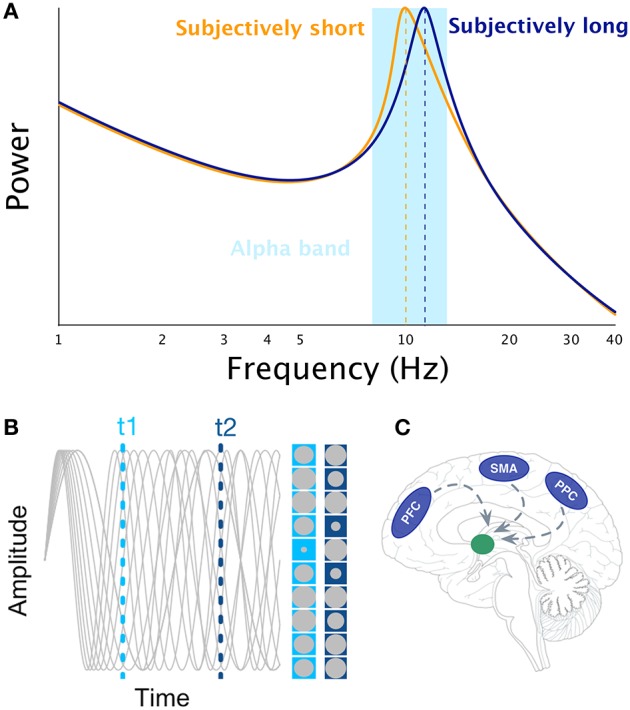Figure 1.

Illustration of the main interval timing theories of interval timing that rely on the notion of neural oscillations. Panel (A) illustrates the idea that faster alpha rhythms results in longer estimates of time as more pulses could be accumulated in a given physical time interval (Treisman, 1963). Panel (B) illustrates the SBF model. The gray sinusoids depict oscillators in an example trial. The amplitude of each oscillator is represented by the size of gray circle at t1 and t2 times, respectively. Panel (C) illustrates the main brain regions engaged in interval timing (PFC, SMA, PPC) and their presumed projections to the striatum as suggested by the SBF model.
